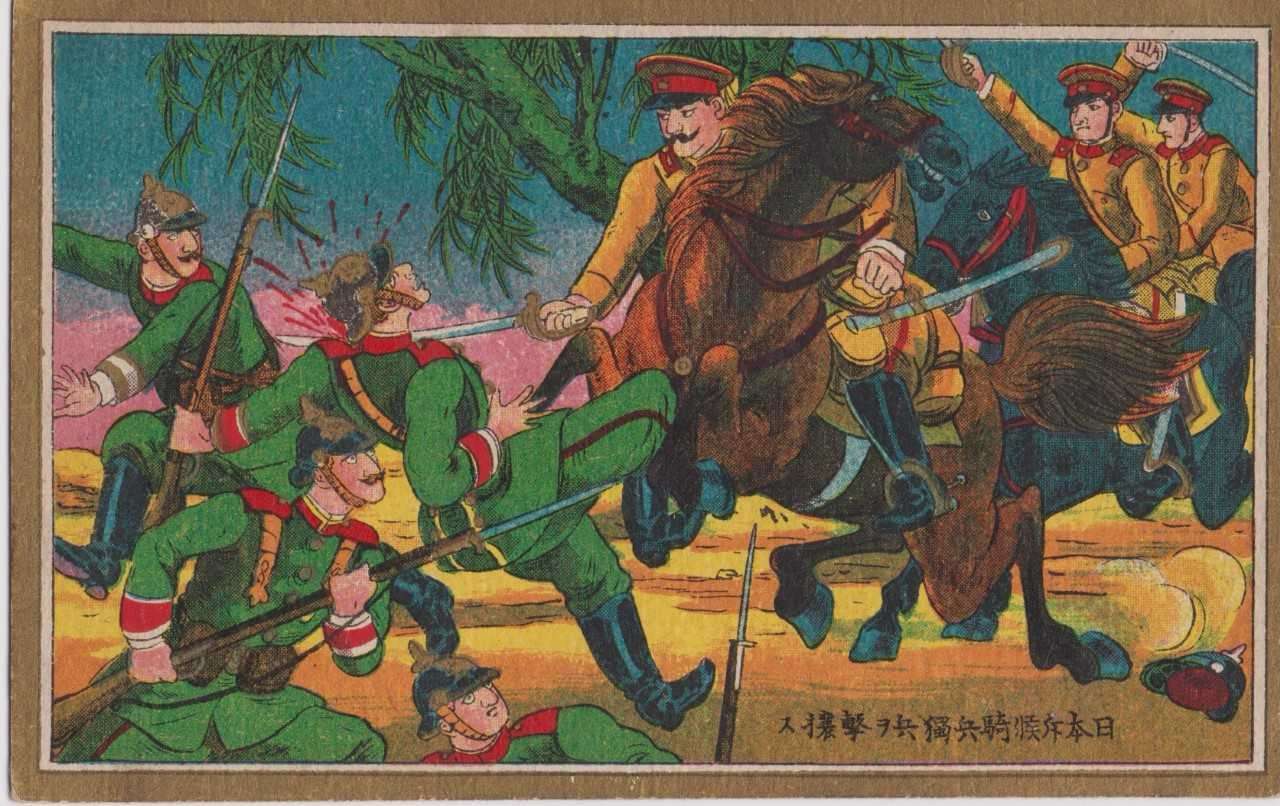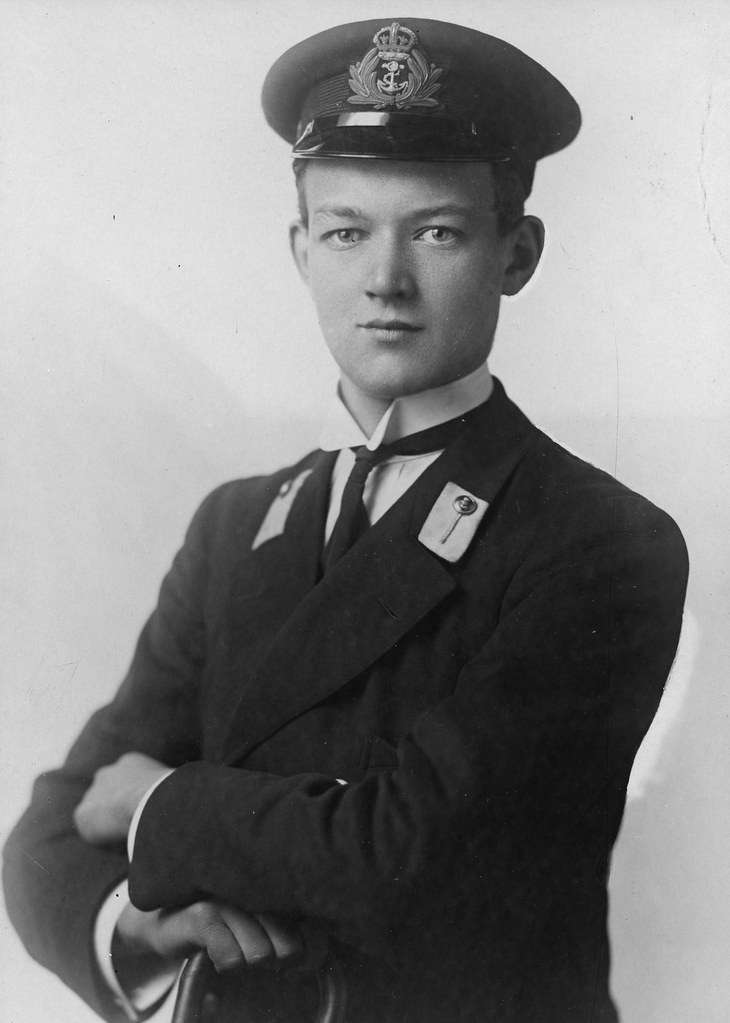Our naval defence correspondent "Neptune" offers another column from his vantage point at the Empire Lounge, Raffles Hotel (reflecting state of play in our PBEM campaign after fourteen turns, with much information concealed for the purposes of OPSEC - ref).
AN INTERVIEW WITH THE FIRST LORD OF THE ADMIRALTY (with thanks to the FSL player for the excellent answers)
Good day Mr Churchill and thank you for taking the time to speak to our readers, who are very interested in the progress of the war. How would you say the war is going as of October 1914?
The war is going splendidly and we would soon drive the boche out of France and out of the war. The Royal Navy is the key to victory and we will keep our army supplied, the Germans blockaded and food in the mouths of every citizen of the British isles. And for what it's worth, Admiral Fisher and I are busy coming up with all kinds of plans that are guaranteed to shorten the war even more, if it lasts long enough for us to implement it.
Most of the action appears to be in the Pacific, where the Germans are very active. Can you confirm if their commander, Admiral Von Spee, is still alive?
While I'm not able to confirm if Von Spee is alive, I can assure you if he is it will not be for long. He can run but he cannot hide, and we will find him and send him and his crew of pirates to the bottom of the sea.
The Royal Navy seems to be having a hard time hunting down the Germans. Since the war began, you’ve lost a modern battle cruiser and two old cruisers, and had a battleship and a modern light cruiser badly damaged. Do these losses concern you?
Having a hard time finding the Germans? My dear sir, I know exactly where the majority of Germans are, they are in the cages we put them in before we send them back to Britain to perform useful things like farm work to compensate for our own menfolk being off to the wars. There's also a great many on their ships still manning their action stations at the bottom of the Pacific, that's where the Germans are sir, and don't you forget it!
War sir, is not a game, losses will occur, the biggest difference between the Royal Navy and the Kaiser's ragtag collection of pirates, is that we have the ships to cover our losses, and they are at present negligible, while the Kaiser has nothing to replace what he's already lost and will lose in the very near future.
What would you say to merchants and passengers afraid to travel by sea in the Pacific?
I would say they are more likely to drown in their own bathtubs than anywhere in the Pacific where the Royal Navy is present. All the members of the fairer sex can rest assured the Royal Navy will be their steadfast escort and will chaperone them to their destinations and see them deposited on shore safely and with all their frilly and lacy belongings.
As for any men who would be afraid to travel in the Pacific, well sir, just let me state that any man who is so uninformed as to fear for his life in traveling to Asia, well a man like this should just as well stay home, because his presence in Asia will simply serve to lower the continent's average level of intelligence and serve no positive purpose in service of any company unfortunate enough to have hired him.
Do you have anything else to say to our readers. sir?
All Americans should have no fear to travel to anywhere in the British Empire. The Royal Navy has secured the sea lanes and have made travel during this German instigated war as safe as it was in previous times of peace. So feel free to visit Asia, visit the United Kingdom, there is no danger from any German influence and the King's subjects are always happy to meet and do business with our American cousins. Traveling the oceans is and will continue to be, child's play, I guarantee it.
STARTLING NEWS FROM MANILA
News has reached us of the recent arrival in Manila of the Norwegian merchant ship Gudrun, carring a motley and much welcomed collection or passengers. The passengers are recently released captives of the famed German pirate ship, Emden, and formed the crews of the SS Clan MacTavish, SS Garlandstone, SS Manxman, and the Russian merchantman Grigory Stenkov. The captives also included three imprisoned Royal Navy officers, including Commander the Right Hon. Geoffrey Sykes-Willoughby.
Faithful readers will recall that in September, HMS Sydney nearly captured the Emden, and rescued the passengers and crew of SS St Osmund. One of those rescued was Mr Midshipman Jukes, who dived off the Emden and swam to safety. His three RN companions are now also at liberty. Commander Sykes-Willoughby told the Sling's correspondent that the crew of the Emden treated them with impeccable courtesy, and treated them to a concert and variety show before embarking them in the Gudrun.
A Brownie camera photograph taken by one of Gudrun's crew shows members of the Emden, and RN MIdshipman Jameson as the young lady (centre), after their highly successful variety show.
As Sykes-Willoughby observed, "Dashed fine fellows, those Germans, and a pity we shall sink them and kill the lot. Pity, they are such good singers". The Captain of the Gudrun was last seen heading for the German Consulate to redeem a promissory note for delayed cargo and for the replacement of the ship's wireless set, destroyed before she was allowed to depart the Emden.
WITH ADMIRAL KING HALL AT DAR ES SALAAM
The Sling has obtained a copy of Admiral King Hall's dispatch describing thrilling and successful operations to capture the German base at Dar Es Salaam. Along with Tsingtao, now in Japanese hands, this news means that surviving German raiders have no refuge in the Pacific save the Port of Rabaul, which is closely watched by the Royal Navy and its allies.
My lords,
Pursuant to your orders, I have the honour submit the following account of recent operations conducted under my direction along the coast of German East Africa, specifically in the vicinity of Dar Es Salaam.
At first light on the morning of the 28th ultimo, HMS Ocean commenced a deliberate bombardment of suspected enemy coastal emplacements. The firing was sustained for a period exceeding one hour, during which time no return fire was observed. Upon cessation of the barrage, HMS Pelorus advanced inshore, leading a flotilla of ship’s boats, each bearing a detachment of troops for the purpose of landing and seizing the place.
The landing force comprised elements of the East Surrey Regiment and sepoys of the Rajputana contingent, under the command of Brigadier Lawrence. I cannot sufficiently praise the energy and enthusiasm of this officer, whose conduct deserves my highest approbation. The disembarkation proceeded without incident, and within a few hours the town was secured. No resistance was encountered, and the gun crews of the Pelorus, though eager, were afforded no opportunity to engage. The landing parties reported that the German garrison had largely absconded prior to our arrival. Only a handful of invalids and medical personnel remained, who were taken into custody without difficulty.
Concurrently, our patrols in the Mozambique Channel received intelligence from native fishermen indicating that a German warship was observed proceeding up the Rufiji River. It is now confirmed that the vessel in question is the Königsberg, which, faced with the overwhelming strength of the Royal Navy, has been withdrawn from active operations to lend support to German land forces. While this removes the immediate threat posed by that vessel, it has necessitated the continued presence of one of His Majesty’s ships in the Channel to prevent any resurgence until such time as it can be finally destroyed, to which I shall attend with appropriate force.
I cannot conclude this letter without drawing their lordships’ attention to the conduct, discipline, and courage of the sailors under my command, during this operation. The co-operation of the Army contingent has been nothing short of exemplary.
I have the honour to remain,
Your obedient servant,
Rear Admiral Sir Herbert Goodenough King-Hall
NEWS OF THE KONIGSBERG
SMS Konigsberg Visiting Singapore Before the War
As Admiral King Hall's dispatch indicates, another of the Kaiser's pirates has been vanquished. While it appears clear now that she was able to destroy two of His Majesty's cruisers, HMS Pegasus and Astraea, off Madagascar, something damage in that fight must have forced the German captain to take refuge up the Rufiji River. Forces under Admiral King Hall have now blockaded her and will see that she poses no further threat to our shipping. As Commander Peters of the Admiralty observed, "Another of the Kaiser's pieces has been removed from the board".
Your humble correspondent Neptune welcomes all tips and information, especially when accompanied by a drink offer. He can be found most days at the Empire Lounge, at his usual table for the 4pm Happy Hour. Ask Fernando the barman to point him out to you.













